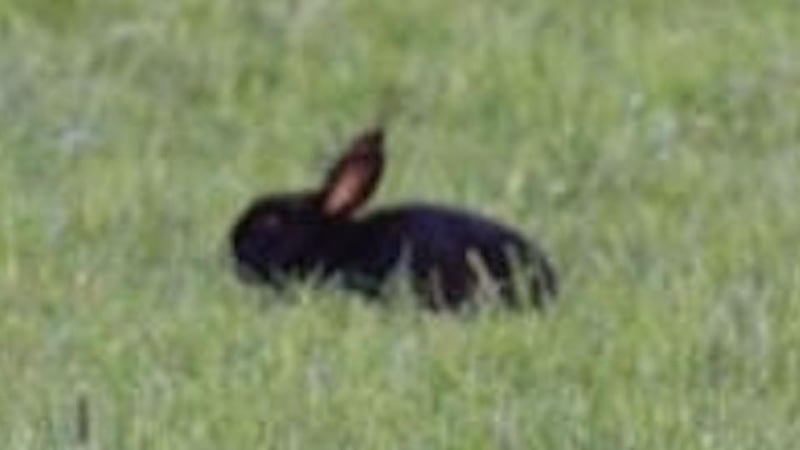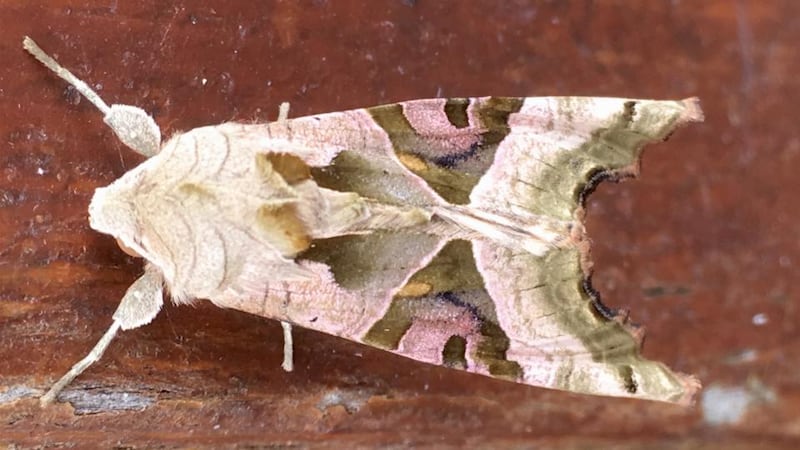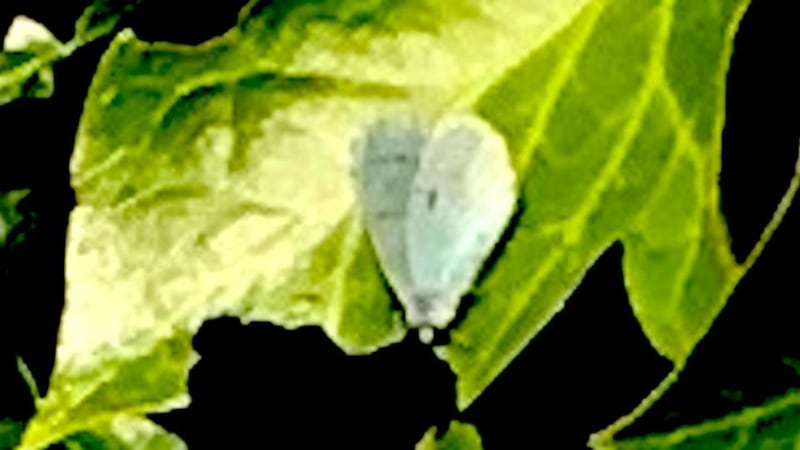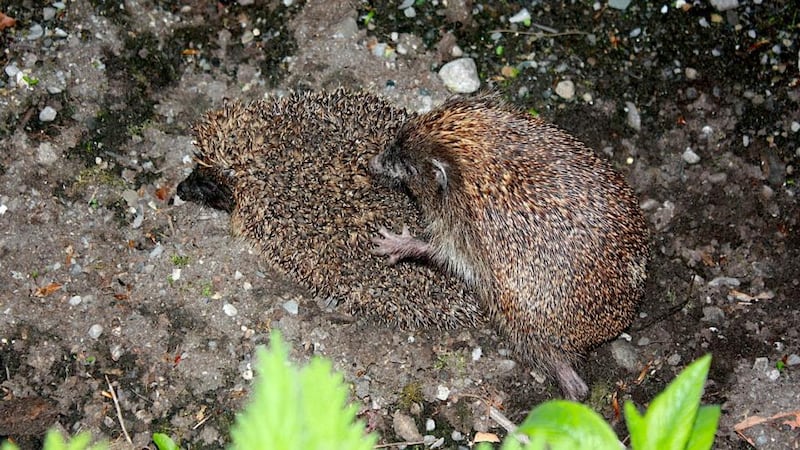I saw this guy up on a high pasture in the Burren. It was about 7cm long. Is it a lizard or a snake? – Rónán O'Brien, Ennis, Co Clare
It's a slow-worm, a legless lizard that was introduced to the Burren in the last century. It and the viviparous lizard are the only reptiles found in Ireland. It feeds on worms, insects, snails and slugs.

You might be interested in my neighbour, an almost black hare (I think). Is that rare in Ireland? – Colm Brett, Maynooth, Co Kildare
It is a black rabbit, which is rather uncommon, although they are found on some of the islands, including Dalkey Island, in Dublin Bay. The colour is caused by the overdevelopment of melanin in the coat – the opposite of albinism, which is a reduction of melanin.

I discovered this moth on my door frame as I was about to sand and varnish it. It was so beautiful that I'll have to wait until it is happy to move on. – Norah Power, Ruan, Co Clare
It is the night-flying angle shades moth. When at rest its wrinkled wings look like a dead leaf.

Early in May I saw a glut of this fast-flying butterfly (or maybe a moth) about the garden. At rest it resembled a petal. – Mary D'Arcy, Ballsbridge, Dublin
It's the holly blue butterfly, which lays its eggs on holly and ivy.

I photographed these mating hedgehogs in my vegetable garden on May 17th. A very large female compared with the male. – Michael Brogan, Ballyhaunis, Co Mayo
Female hedgehogs are smaller than males. When they sense danger they erect their spines. Notice that her spines are erect while his are smooth, so she's not as welcoming as he would like.
Ethna Viney welcomes observations and photographs at Thallabawn, Louisburgh, Co Mayo, F28 F978, or by email at viney@anu.ie. Please include a postal address














